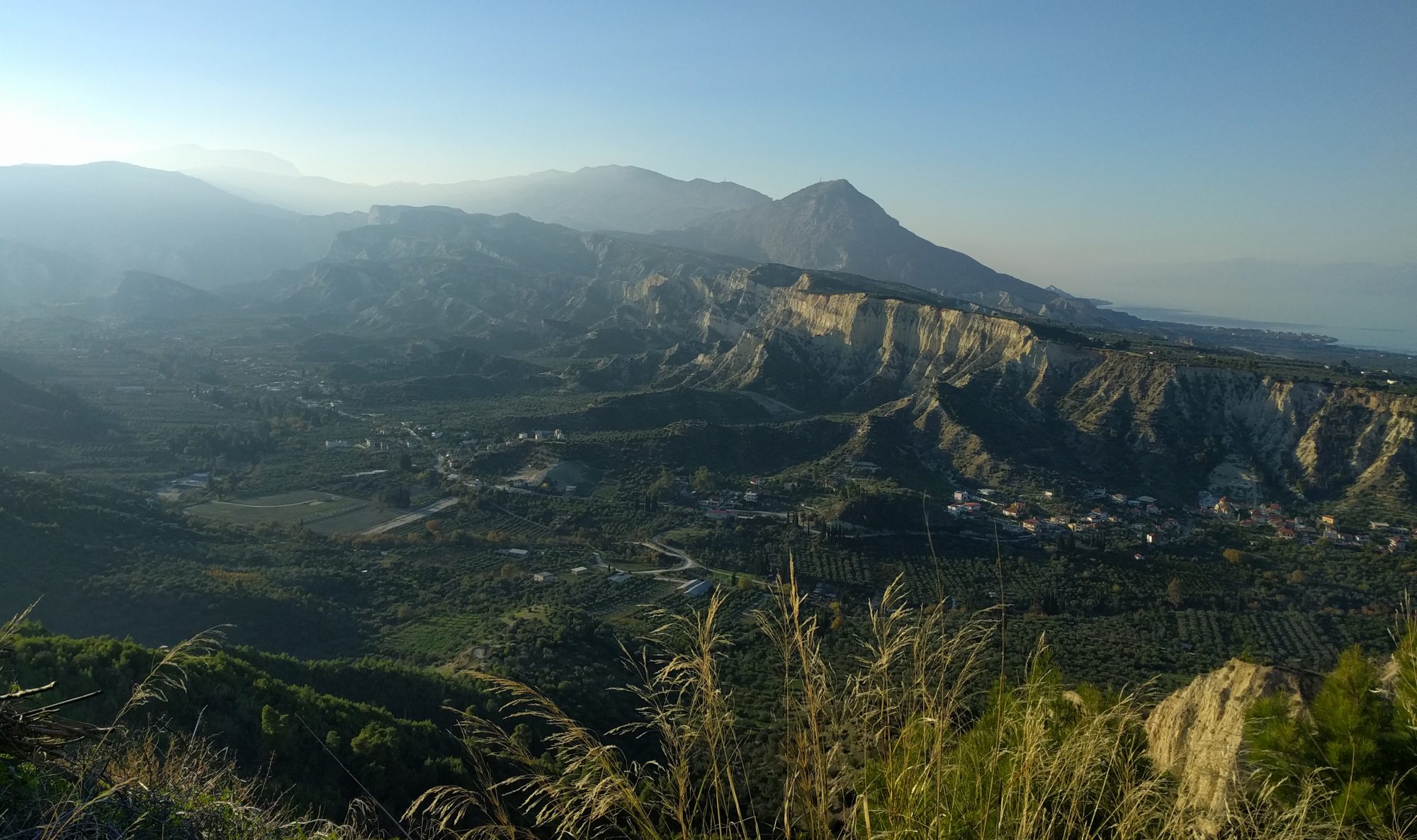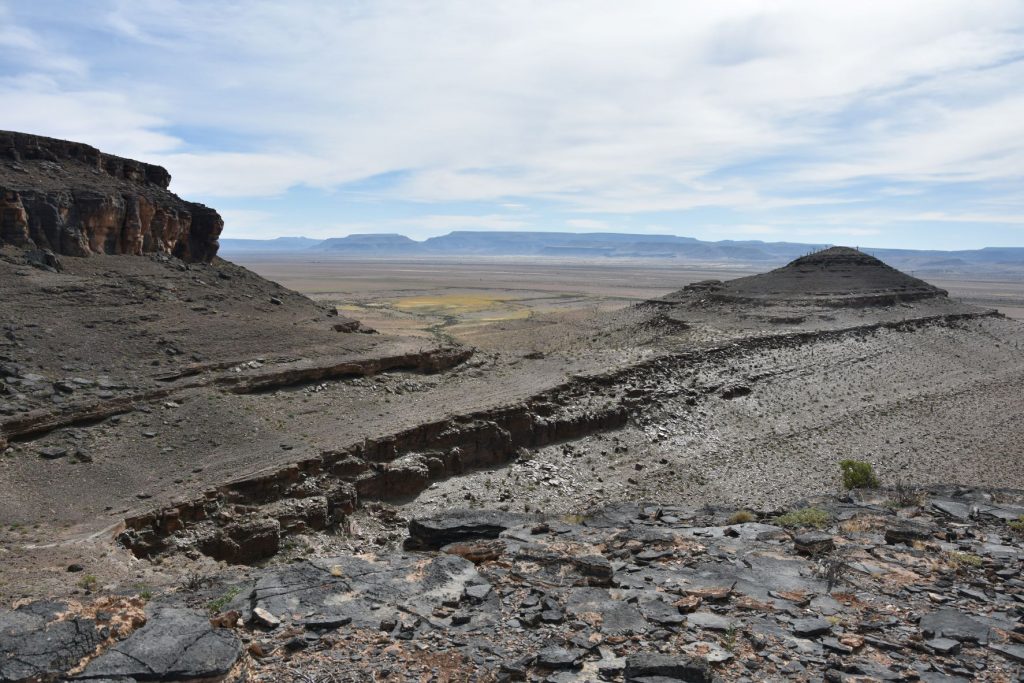Fossils of the Earth’s earliest animals appear abruptly in the geological record ~574 million years ago (Mya), and then suffer a mysterious decline in diversity just a few million years later ~550 Mya. Some researchers consider this biological change to be Earth’s first mass extinction event.
One of the few areas of the world that hold clues to Earth’s early animals — their evolution and potential mass extinction — is the crusty desert of Namibia.
Alex Liu, Will McMahon and I went to Namibia in June 2022 to investigate the environmental context of early complex lifeforms known as Ediacaran animals. We joined scientists from the Namibian Geological Survey to the target the Ediacaran to Cambrian Nama Group in the Witputz Sub-basin.
Desert fieldwork involved long walks carrying what felt like a billion kilos of rock, black mamba snake night terrors, endless grasshopper dive bombings, and a 3 am parade of zebras though camp.
We camped for about a month: each of us developed a thick layer of dirt crust and two out of three of us got a tan. A few snakes took a disliking to Alex, but he was fortunately well armoured in snake-proof gaitors and managed to escape encounters. Will never saw a mongoose (his main goal on the trip).

Alex Liu sets up camp. 
“Desert fieldwork involved black mamba snake night terrors…” 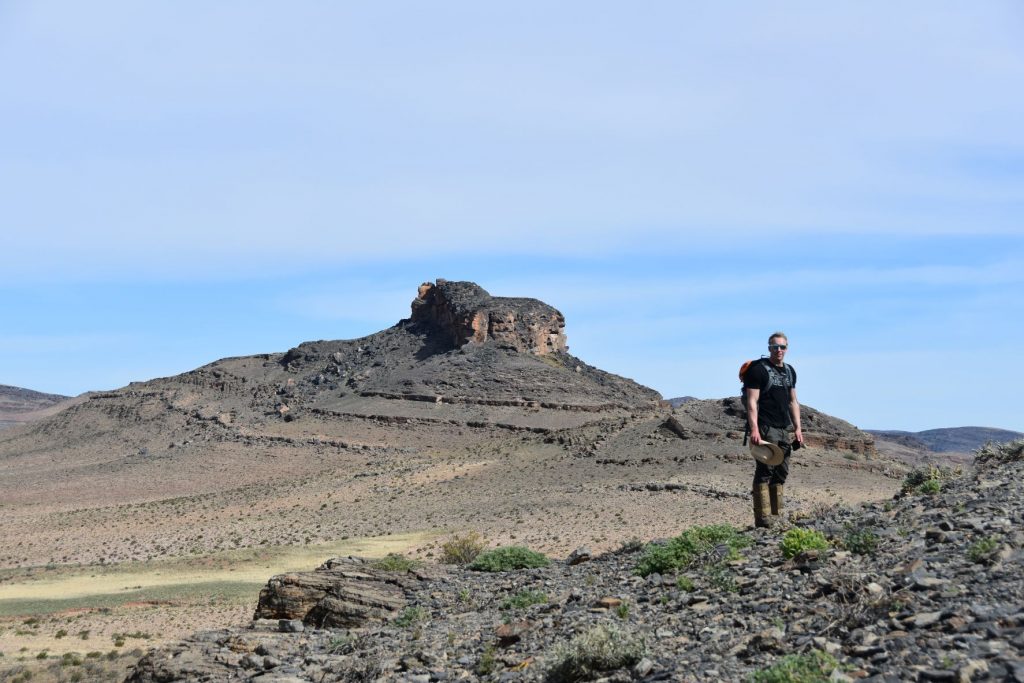
Fossil-hunting with Will McMahon.
We spent each day measuring stratigraphic sections, describing the sedimentology of the rocks, scratching our heads, and searching for fossils within a sedimentological and stratigraphic context.
The desert climate allowed us to see outcrops in detail, walk out lateral changes in sedimentary facies, and reconstruct the basin’s depositional environments. We focused on shallow-to-deep transects to investigate how environments change from land to the deep marine realm. We found ancient beaches, shoreface settings, low-energy deep marine muds, strange ironstone intervals, deep water stromatolites, and magical patch reefs with marine cements. Alex’s fossil-finding wizard eyeballs were always hard at work to add paleontological detail to the sedimentology and stratigraphy.
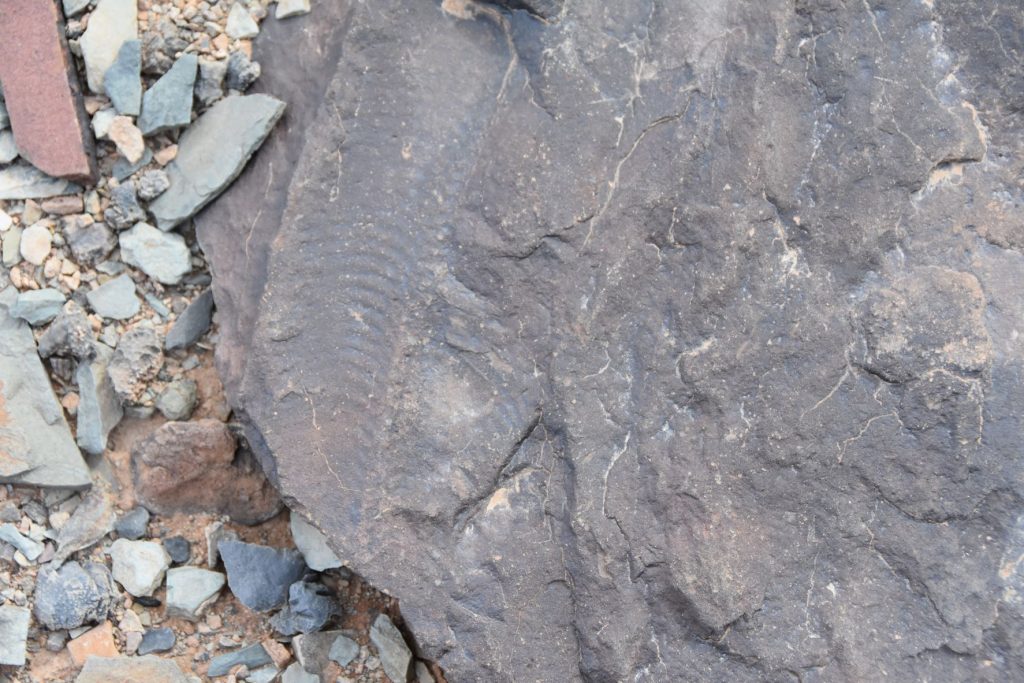
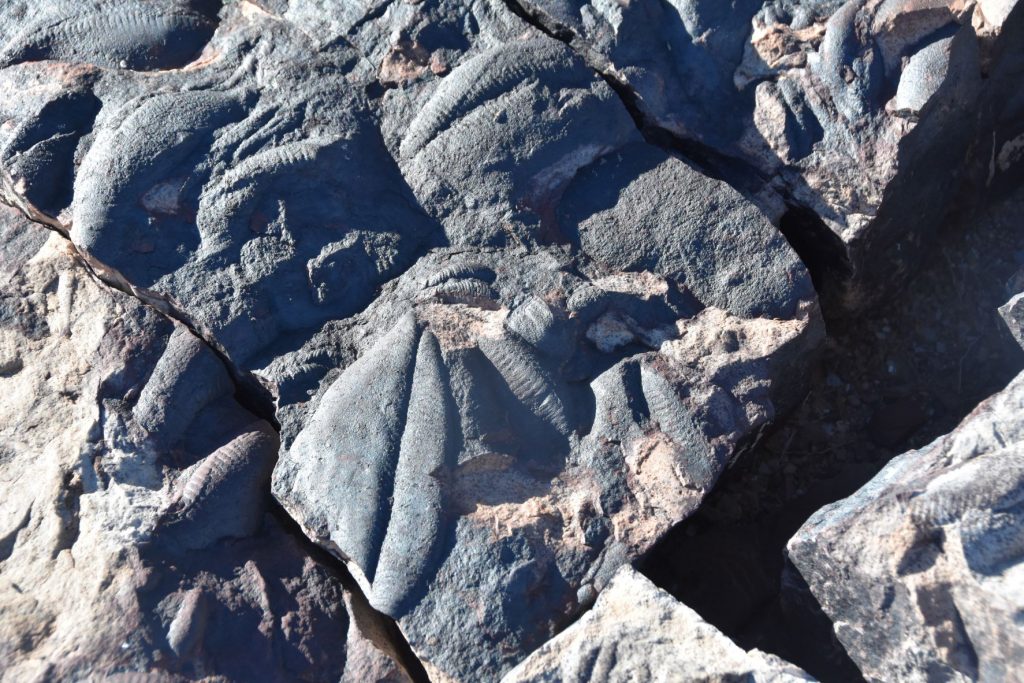

Ediacaran fossils found by Alex, Brennan and Will on fieldwork. The top two images show specimens of Pteridinium and the lowermost are Ernietta. All are preserved in three dimensions in the sandstones of the late Ediacaran Nama Group, southern Namibia.
Earth’s first animals lived in both shallow and deep marine environments: we found soft body fossils in high-energy shoreface environments as well as deeper marine settings occasionally disturbed by storms. Despite a range of favourable environments, one constant was that Ediacaran fauna could not handle much sediment input (sensitive creatures).
One puzzling find was that throughout the stratigraphy, the same environments and bed-scale styles of sedimentation/preservational windows pop up over and over, but the fossils are not always present. Environments and bed-scale styles of sedimentation are pieces to the puzzle, though there may have been additional controls on early animal life.
Our goal is to untangle the many moving parts that control the presence and preservation of Earth’s earliest animals, and their mysterious disappearance from the rock record. Was there an actual mass extinction? Our trip to Namibia is part of a larger Leverhulme funded project to put the Ediacaran fauna into a global environmental and sedimentological context. Other sites include Newfoundland and Australia, stay tuned!
Dr Brennan O’Connell — Post Doctoral Research Associate in Sedimentology.
